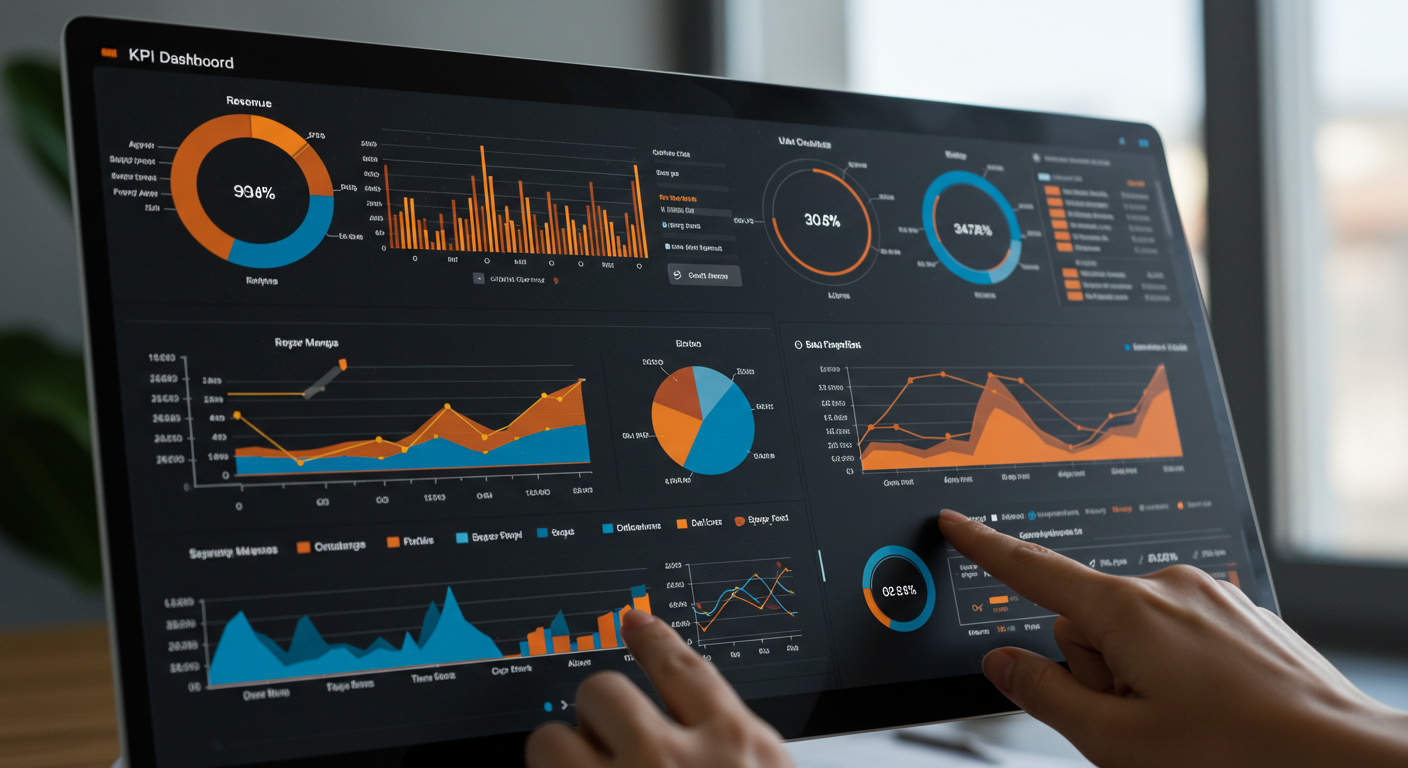Data-Driven Decisions: KPIs for SME Success
Updated on Aug 12, 2025 by Gabryela Vilarino

The Power of Data in SME Operations
In today’s competitive landscape, Small and Medium-sized Enterprises (SMEs) face immense pressure to optimize performance and ensure sustainable growth. While intuition and experience are valuable, relying solely on them can lead to missed opportunities and inefficient resource allocation. This is where data-driven decision-making, powered by Key Performance Indicators (KPIs), becomes indispensable. KPIs are measurable values that demonstrate how effectively a company is achieving key business objectives. For SMEs, identifying and tracking the right KPIs is crucial for understanding operational health, making informed strategic choices, and ultimately, driving profitability.
This blog post will guide you through the process of selecting KPIs that truly matter for your SME’s daily operations, helping you transform raw data into actionable insights. By focusing on relevant metrics, you can gain a clear picture of your business performance, identify areas for improvement, and steer your company towards greater success. For more insights on project management, visit the Gipo blog.
Why Data-Driven Decisions and KPIs Matter for SMEs
SMEs often operate with limited budgets and resources, making every decision critical. Data-driven decision-making, supported by well-chosen KPIs, offers several compelling advantages:
• Clarity and Focus: KPIs provide a clear, quantifiable way to measure progress towards specific goals, helping your team stay focused on what truly matters.
• Early Problem Detection: By continuously monitoring KPIs, you can identify potential issues or inefficiencies early on, allowing for timely intervention before they escalate.
• Resource Optimization: Data insights enable you to allocate resources more effectively, ensuring that investments yield the best possible returns.
• Accountability and Transparency: KPIs create a framework for accountability, as performance can be objectively measured and communicated across the organization.
• Strategic Agility: With real-time data at your fingertips, your SME can respond quickly to market changes and adapt strategies to maintain a competitive edge.

Visualize your key performance indicators for immediate insights.
Identifying Key Metrics for Your Daily Operations
Choosing the right KPIs depends heavily on your specific business model, industry, and strategic objectives. However, some common categories of KPIs are universally applicable to most SMEs:
1. Financial KPIs
Financial health is paramount for any business. These KPIs provide insights into your revenue, costs, and profitability. For a deeper dive into financial metrics, consider resources like Investopedia.
• Revenue Growth Rate: Measures the percentage increase in revenue over a specific period. A healthy growth rate indicates business expansion.
• Gross Profit Margin: Calculates the percentage of revenue left after deducting the cost of goods sold. This shows the profitability of your core products or services.
• Net Profit Margin: Represents the percentage of revenue left after all expenses (including taxes) have been deducted. This is a comprehensive measure of overall profitability.
• Cash Flow: Tracks the movement of cash into and out of your business. Positive cash flow is essential for day-to-day operations and investment.
2. Customer-Related KPIs
Understanding your customers is vital for sustained success. These KPIs focus on customer acquisition, retention, and satisfaction. Learn more about customer metrics from HubSpot.
• Customer Acquisition Cost (CAC): The average cost of acquiring a new customer. A lower CAC indicates efficient marketing and sales efforts.
• Customer Lifetime Value (CLTV): The predicted revenue that a customer will generate throughout their relationship with your business. A high CLTV signifies strong customer loyalty and effective retention strategies.
• Customer Churn Rate: The percentage of customers who stop doing business with you over a given period. A high churn rate signals potential issues with product, service, or customer support.
• Customer Satisfaction (CSAT) Score: Measures how satisfied customers are with your products or services, often collected through surveys.
3. Operational KPIs
These KPIs measure the efficiency and effectiveness of your internal processes. For more on operational efficiency, check out articles on operational KPIs.
• Order Fulfillment Rate: The percentage of orders successfully delivered on time and in full. This reflects operational efficiency and customer service quality.
• Inventory Turnover: How many times inventory is sold and replaced over a period. A higher turnover generally indicates efficient sales and inventory management.
• Employee Productivity: Measures the output per employee, which can be tailored to specific roles (e.g., sales per employee, projects completed per team).
Implementing a Data-Driven Approach
Once you’ve identified your key KPIs, the next step is to implement a system for tracking and analyzing them:
1. Define Clear Goals: For each KPI, set specific, measurable, achievable, relevant, and time-bound (SMART) goals.
2. Choose the Right Tools: Utilize business intelligence (BI) dashboards or project management software that allows for easy tracking and visualization of your KPIs. Many affordable options are available for SMEs.
3. Regular Monitoring: Review your KPIs regularly (daily, weekly, or monthly) to identify trends, deviations, and opportunities.
4. Take Action: Data is only valuable if it leads to action. Use insights from your KPIs to make informed decisions and implement necessary changes.
5. Iterate and Refine: Business environments evolve. Continuously review and adjust your KPIs to ensure they remain relevant to your strategic objectives.

Make informed decisions with a clear view of your business data.
Your Path to Sustainable Growth
For SMEs, data-driven decision-making is not a luxury but a necessity for navigating today’s complex business landscape. By strategically identifying and consistently monitoring the KPIs that truly matter to your daily operations, you empower your business to make smarter choices, optimize resources, and proactively address challenges. Embrace the power of data, and pave the way for sustainable growth and long-term success. Start your data journey today, and watch your SME thrive.